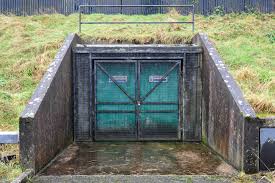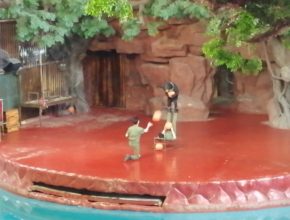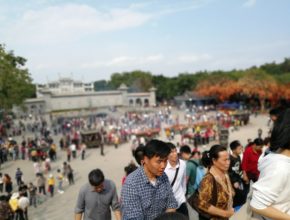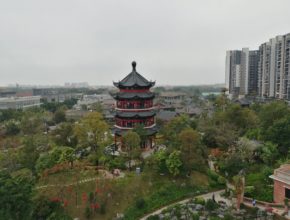
Debriefing of the CNY trip 2019
Hong Kong’s newest links to mainland China had another bumper day on Thursday – the third day of Lunar New Year of pig – due to glitches in the shuttle bus ticketing system. The fault led to crowds of passengers being stranded for hours at the Zhuhai bridge port across the border. Meanwhile, I have just learnt from SCMP that my family gave contribution to outnumber the Hong Kong government’s estimation of 90,100 daily users during peak season – with a record of nearly 104,200 passengers at the West Kowloon terminal of the high-speed rail line to mainland China.
This Chinese New Year (CNY), my family joined a package tour to mainland China. The trip started from the West Kowloon High-speed rail station and had a fabulous full stop on an artificial island of which construction fee is about the tune of hundred billion (千億) nearing the Hong Kong International Airport (HKIA) -the Hong Kong-Zhuhai-Macau Bridge (HZMB).
The HZMB and the High Speed Rail started their operations during the second half of 2018. Both build up the region to far greater movement, interaction and opportunity. Intriguingly, the first proposed for the HZMB dates back to 1983. Big dreams are one thing; making them a reality is quite another. After nine (9) years of construction, the HZMB opened on 24 October, 2018.
Two (2) special administrative regions and nine (9) municipalities make up what is considered one of China’s fastest-growing regions: the Guangdong-Hong Kong-Macau Greater Bay Area (the Greater Bay Area).
Before the links opened, the connectivity was hindered by a lack of direct transport routes around the Pearl River Delta (PRD). In the past, using Kwai Tsing Container terminal as a reference point, the only way to travel by car from Hong Kong to Zhuhai was passing through Humen Bridge (虎門大橋). It was taking almost 4 hours, in comparison with just 75 mins now and the journey’s distance reduces significantly from 200km to 65km.
The HZMB comprises of four (4) artificial islands with dual three lanes. The cable stays and a colossal amount of steel provide the bridge with the necessary support to withstand earthquakes of up to 8.0 on the Richter scale and winds of up to 340km/h. The published HZMB ‘s service lifetime is 120 years.
The HZMB ranks 6th in the world (in terms of length), stretching from Hong Kong to Macau’s port and beyond to Zhuhai’s port. Should the Zhuhai Link Road (approximately 13.4km) takes into account, the HZMB’s length to a total of 55km, making it the longest bridge-and-tunnel sea crossing in the world. The HZMB runs for 42km – including 12km Hong Kong Link Road, approximately 7km undersea tunnel and the 23km Main Bridge.
The underwater tunnel is part of the solution to keep shipping lanes open. The tunnel consists of 33 segments situated 45m below sea level with two entry/exit points at Western and Eastern Artifical Island.
Notes:
The HZMB’s length behind four other Chinese bridges and one in Taiwan – Danyang–kunshan grand bridge is the world‘s longest viaduct (in 2018), with 164.8 km long on the Beijing–Shanghai High-Speed Railway and the Changhua–Kaohsiung Viaduct is the world’s second longest bridge, length in 157 km.
This CNY I headed north for the mainland China – I spent two days in Foshan (佛山), which is a prefecture-level city (地级市) in central Guangdong Province, China. At the first day we commenced our journey at 0916LT from high-speed rail terminal of Kowloon West to Futian station.
“Vibrant Express” (動感號), is the high-speed rail’s new train – every schedule of train consists of two first class cabins and six second class carriages – in a sum of eight cars.
With maximum 579 passengers capacity for every schedule, the first class cabin has 68 luxurious seats and individual audio system for passengers, which is located in the first and last carriages of the train. In second class, there are 511 comfortable seats running across six cars. There are two wheelchair-friendly areas in compartment 7 of each Vibrant Express train. For me, the leg room space of Vibrant Express is similar to a seat of premium economic class on modern jet. Some facilities on-bard are worth to be praised – the lavatory and the built-in power sockets, I treat them as the adornment due to the incredible speed of journey though.
 At around 0930LT, just less than 20 mins, we had already arrived the Futian station. After some of the counterparts visited the washroom inside the terminal, we got onboard the couch at around 1005LT for the remain section for our first checkpoint. Not sure if it was because of the CNY, we encountered bumper taffic along the Humen Bridge (虎門大橋) and reached a highway car park called Nansha Parking Area (南沙停車區) at 1214LT. Used almost 03hr 13mins, we arrived Caribbean Hotel in north-west part of Zhongshan (中山), which is another prefecture-level city in the south of the Pearl River Delta in Guangdong province, China.
At around 0930LT, just less than 20 mins, we had already arrived the Futian station. After some of the counterparts visited the washroom inside the terminal, we got onboard the couch at around 1005LT for the remain section for our first checkpoint. Not sure if it was because of the CNY, we encountered bumper taffic along the Humen Bridge (虎門大橋) and reached a highway car park called Nansha Parking Area (南沙停車區) at 1214LT. Used almost 03hr 13mins, we arrived Caribbean Hotel in north-west part of Zhongshan (中山), which is another prefecture-level city in the south of the Pearl River Delta in Guangdong province, China.
We had a lunch break at the hotel before we went to a amusement park called Changlu Resort (長鹿旅游休博园), which is located in Lunjiao District (倫教), south-east of Foshan. The park is quite similar to the Ocean Park in Hong Kong with accommodation available. Of course, you can just buy the ticket for the day-time activities – animals, thrill rides, shows and military theme area. You should spend a whole day for this attraction! As our itinerary were set and we had only around 3 hours. We got enjoyment in a circus performance – black bear hold balls, tiger jump through hoops, sea lions one-handed handstand and all that jazz. Next, we went to ride on pedal boat along the pond before we joined the tour guide again. We used the full-fare ticket, which cost RMB $ 220. To me, the price is reasonable since we can use the points/credits, whatever you call that inside the e-ticket for any facility inside. If I had time, I would like to try the Bungee jumping (笨豬跳) and Go-Kart (小型賽車).
The accommodation of the 3 days and 2 nights trip is arranged by the travel agency. Interestingly, we could not search any vacancy from the Internet hotel reservation websites. Therefore, I strongly believe that all rooms have been reserved by that or several dominant agencies. Although the gymnasium is closed and there is no fresh-grind coffee and milk in the convenience store next to the lobby, you still could find bottled water, canned beer, snacks and toiletries (梳洗用品). As a guest, I use the word “decent” to describe the breakfast. At least, I could pick up eggs, fried-instance noodle and fried-cabbage. However, I can’t really stand the soy-milk from the “automatic-coffee machine”. In the mainland, “everything” could be synthesized, couldn’t they? On the other sides, the network provided by the hotel is limited, not because of the connectivity, but the influence of the “Great Wall” – scrutiny and screening of network message. We could receive TVB channel through the television that is connected to the Internet via a TV box, the decipher. Interestingly, you could enjoy most of the programs excluding TVB news. What’s more important and should be praised is that there is no acrid residual smoke of cigarette. Overall, the interior lights and air conditioning system gave us a sweet dream.
Watching movie or TV programs is a great activities at night, isn’t it? As we bought a pre-paid SIM card at Hong Kong, we could use certain apps and browse websites blocked by the wall. Recently, I am following an adrenaline rush TV series called “designated survivor”. Below lexicon are what I have searched from the dictionary apps, learning something new –
Booyah! – Slang term from the early 1990s meaning roughly “OH YEAH!” or “IN YOUR FACE!” or “THERE WE GO!”
lunatic (adj.) – a person who is mentally ill (offensive old-fashioned)
run amok (ph.) – to be out of control and act in a wild or dangerous manner
psychopath (n.) – someone who is very mentally ill and dangerous
whitewash (v.) = hide (v.) -He whitewash the fact. Don’t believe in him!
gild the lily (ph.) – 畫蛇添足 e.g Not gonna to lie, what you have done is gilding the lily.
entrance 入口(n.)/ 吸引(v.) – e.g I were entranced by your eyes.
emblem (n.) = symbol (n) – e.g A dove is often used as an emblem of peace
consternation (n.) – e.g I get a consternation
op-ed (n.) – used to describe a piece of writing that expresses a personal opinion and is usually printedin a newspaper opposite the page on which the editorial is printed
ambush (v.) 埋伏
 bunker (n.) – 地堡 a shelter, usually underground, that has strong walls to protect the people inside it frombullets or bombs
bunker (n.) – 地堡 a shelter, usually underground, that has strong walls to protect the people inside it frombullets or bombs
showdown 攤牌 (n.) v.s pardon (n.) 寬恕/特赦
sedative (n.) 鎮定劑
dossier (n.) – a set of papers containing information about a person, often a criminal, or on any subject
humiliate (v.) – to make someone feel ashamed or lose respect for himself or herself
embarrass (v.) < humiliate (v.) < insult (v.)
eke out a living (ph.) 維持生計- e.g He is the breadwinner earning money for their family to eke out a living, such a great father, isn’t he?
plausible (adj.) – e.g I need an affirmative answer in lieu of a plausible response.
outrank (v.) – e.g I need you following my order as I outrank you, got it?
indemnification (n.) – e.g Now, we need your trust and cooperate with us. We have bought you the indemnification.
indemnify (sth.) against (sth.) [ph.] – e.g The insurance also indemnifies the house against flooding.
Life Insurance (n.) 人壽
Hospital Cash Insurance (n.) 住院保險
Outpatient Insurance (n.) 門診保險
have/throw tantrum (n.) – a sudden period of uncontrolled anger like a young child’s
example: Charlie had/threw a tantrum in the shop because I wouldn’t buy him any sweets.
Our family should give a big thanks to my sister as she helps us preparing the SIM card with the Internet accessing function. Nowadays, for those living in a freedom countries and cities, the Internet is part of our life. Below link is the information for your reference, we tried, it works!
CSL 全球路路通 8 日多國 4G 上網卡惡鬥 AIS Sim2Fly!大陸高流量免翻牆最抵
 At the 2rd day of the trip, we took a 30 mins bus from the hotel at Lecongzhen (樂從鎮), a town within Shunde District (順德區) to the Xiqiaozhen (西樵鎮). Alright, by the way, a keyword has just emerged – Shunde District (順德區). What a shame! There is a Chinese goes: 讀萬卷書不如行萬里路, that in the English “He that travels far knows much”
At the 2rd day of the trip, we took a 30 mins bus from the hotel at Lecongzhen (樂從鎮), a town within Shunde District (順德區) to the Xiqiaozhen (西樵鎮). Alright, by the way, a keyword has just emerged – Shunde District (順德區). What a shame! There is a Chinese goes: 讀萬卷書不如行萬里路, that in the English “He that travels far knows much”
He that travels far knows much ;
Shunde District, also known as Shuntak, is a district of the city of Foshan, Guangdong province, located in the Pearl River Delta
原來順德在佛山!
 We had a vegetarian poon choi (盤菜), a.k.a ‘big bowl feast’ in a restaurant. Indeed, the ‘big bowl feast’ is the most notable walled-village dish (圍村菜) in Hong Kong. A huge amount of ingredients are layered in a large bowl and eaten communally. One big bowl feast could include pork, beef, lamb, abalone, chicken, duck, shrimp, crab, various mushrooms, Chinese radish and tofu in nine to 12 layers — enough to satisfy a group of ten people. The ingredients are not mixed; the bowl’s contents are eaten layer by layer. The one we had in the mainland is made of pure non-mean ingredients and sources. The taste is decent, but the outlook is not that mouth-watering, in comparison to the photo at right. After that, we headed for next scenic spot (風景區).
We had a vegetarian poon choi (盤菜), a.k.a ‘big bowl feast’ in a restaurant. Indeed, the ‘big bowl feast’ is the most notable walled-village dish (圍村菜) in Hong Kong. A huge amount of ingredients are layered in a large bowl and eaten communally. One big bowl feast could include pork, beef, lamb, abalone, chicken, duck, shrimp, crab, various mushrooms, Chinese radish and tofu in nine to 12 layers — enough to satisfy a group of ten people. The ingredients are not mixed; the bowl’s contents are eaten layer by layer. The one we had in the mainland is made of pure non-mean ingredients and sources. The taste is decent, but the outlook is not that mouth-watering, in comparison to the photo at right. After that, we headed for next scenic spot (風景區).
In Hong Kong, we have the Big Buddha and Po Lin Monastery and there, they have the Nanhai Guanyin (南海觀音) within Xiqiao Mountain Scenic Area. During CNY, there was flow control of traffic, we had to walk for almost 40 mins from the mid-hill to the statue of Guanyin (觀音). Guanyin or Guan Yin (/ˌɡwɑːnˈjɪn/) is often known as the “Goddess of Mercy” or the Mercy Goddess, refers to the Buddhist bodhisattva (菩薩 ; 音 body-sat-va) associated with compassion and venerated (respected) chiefly by followers in the sinosphere – “East Asian cultural sphere” (東亞文化圈). Guanyin has various incarnation (化身) and is revered as an immortal, according to the Chinese folk religions and the myths.
In the traditional holiday, it is not unusual to see loads of visitors, both believers and guests, at Xiqiao Mountain Scenic Area (西樵山觀景區), where is a dormant volcano (休眠火山). The mountain is designated as a national forest park and national geological park as well as rated as one of the thirteen 5A Tourist attractions or scenic areas in Guangdong Province. Today, it is divided into ten major scenic areas, including the Nanhai Guanyin Culture Park, which contains a 66 meters (217 feet) statue of the goddess Guanyin.
I had had not been to the Foshan (佛山) for a decade. This trip when I visited there, I felt overjoyed since there are a huge improvement observed. All the washroom I visited has at least a loo equipped with toilet seat in lieu of squat one and recycling bins are set in most of the sightseeing spot. Besides, in the colorful-traditional festival, as a visitor, I noticed few hawkers near the entrance, that infuse me with travel mood.
In the morning of the 3rd day, after we have had breakfast in the hotel, we visited Heyuan (和園), which is located in Sanshui District (三水區), north-west part of Foshan. According to Wiki, Sanshui is known for the “Samsui women“, emigrants who went to Singapore between the 1920s and 1940s in search of construction and industrial jobs.
As I supposed to learn the history from the tour guide and so I did not do any information research about that. To be honest, I highly believe that both the tour manager (領隊) and the tour guide (導遊) finished certain part of their responsibilities – ensure our itinerary running smoothly and safely. However, they had rarely shown their ability to demonstrate the feature and history information for us. As a  result, we enjoyed our time with our family. The trip is just a trip for gathering, taking photos.
result, we enjoyed our time with our family. The trip is just a trip for gathering, taking photos.
The last sightseeing place was Foshan Lingnan World (岭南天地). No offense, it is essentially another version of “1881 Heritage” in Hong Kong. The Lingnan World is at the mid-point between Pujun North road (普君北路) and Renmin Road (人民路). It is literally located at the middle of the Foshan. So, you could get what you could see in Tsim Sha Tsui of Hong Kong – I means, there are various modern retailers and restaurants. So, “why not gripping a cup of joe before we are going to finish our trip”, I realized.
 At 1530LT on 09 Feb 2019, we got onboard the coach at the Lingnan World and heading for the HZMB. Around 60 mins later, our vehicle paused at Shaxi Service Area (沙溪服務區). And further 60 mins later, at 1730LT, we arrived the west-side of HZMB – i.e the Zuhai and Macau ports. Deducting around 10 mins washroom rest time in Shaxi Service Area, it took us almost 2 hrs from Foshan to Zuhai and Macau ports of HZMB.
At 1530LT on 09 Feb 2019, we got onboard the coach at the Lingnan World and heading for the HZMB. Around 60 mins later, our vehicle paused at Shaxi Service Area (沙溪服務區). And further 60 mins later, at 1730LT, we arrived the west-side of HZMB – i.e the Zuhai and Macau ports. Deducting around 10 mins washroom rest time in Shaxi Service Area, it took us almost 2 hrs from Foshan to Zuhai and Macau ports of HZMB.
The security screening and immigration clearing of the China needed around 30 mins as I remembered that we entered the waiting gate at 1801 LT. We embarked another coach with dual-border license plate at 10 mins later around 1811 LT. If the information and reasoning is correct, we headed out the arrival hall of the Hong Kong Boundary Crossing Facilities at 1900LT. To sum up, we used 3 hrs 30 mins from the Foshan back to Hong Kong, but that did not count the time from the artificial island to home.
Thanks for watching my journey’s sharing. As my recent lesson of an aviation operations management course engaged this topic, the trip do give me a treasure experience. What’s more is that this CNY is awesome!


















